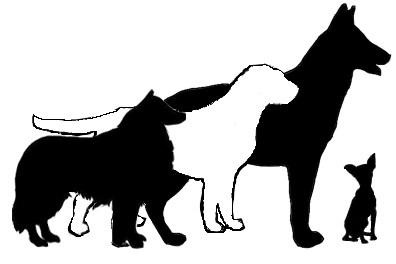Tips for Making Vet Visits Less Stressful
- Paw Pack Dog Training
- Apr 4, 2017
- 4 min read

Taking your dog to the vet can be stressful for your dog and you. In a pinch, here are 3 quick tips to use. Keep reading for some great suggestions that take a little more time and practice to help your dog be less stressed and more comfortable at the vet's office.
3 quick tips to help with vet visits:
1. Come prepared to reward! Bring a good sized handful of tasty treats with you in your pocket (super high-value treats include chicken, steak, cheese, etc. - no boring stuff!) Use these treats from the moment you step out of the car, throughout the visit, to the moment you pay the bill and leave. If your dog is not taking the super yummy teats, he may be over his threshold (very stressed). This behavior tells you that you need to do some work to help him get comfortable even before you enter the vet office for your next visit.
2. Use a bag of tricks! Have your dog do the various “tricks” he knows – sit, down, paw, touch, heel in small circles (pivots), spin, back-up, bow, cross-paws, etc. Be sure to reward him!
3. Bring a "blankie". If your vet is OK with it, bring a small mat with a rubber backing. This will help your dog feel more stable while standing. Plus, this mat smells like home and there’s no better place like home!
With some practice, here are great ways to help reduce stress for your dog at vet visits.
Visit the vet sometimes in-between your actual appointments. These social visits are just to say hi and familiarize your dog to the smells, sounds, and sights of the vet office. The visit can be as short as 5 minutes. Be sure to bring the tastiest treats your dog loves (chicken, steak, hot dog – no boring treats!) If your dog is comfortable in the office, see if you can weigh your dog and visit an empty exam room. Ask office staff, vet techs, and the vet to say hello. If your dog is comfortable, have the staff offer him those tasty treats. Short impromptu visits make the actual vet visit less novel and scary. These visits can work well if your dog is comfortable with strangers. If your dog shows very fearful, shy, and/or reactive behaviors, there are other steps you need to take before the next visit. We’ll address some of those in a future post. Also, give your vet a quick call before you come for a social visit to be sure it’s a good time.
Handle your dog daily – literally from head to tail. You want your dog to be comfortable having various parts of his body examined: paws, ears, mouth, eyes, tail, tummy, chest, etc. etc. This is as simple as when your dog is relaxed, laying down near you, gently touch and stroke him all over. You can massage him too! Be sure you touch in-between his toes, look at his teeth and ears, and lift his tail. This type of daily handling desensitizes your dog to the type of touching that he’ll experience at the vet’s when he goes in for a visit. When your dog is more relaxed and less stressed, it’s easier for your vet to do a thorough examination.
Help your dog get comfortable with being in a crate. If you need to leave your dog at the vet’s office, he’ll likely be placed in a crate (kennel). It’s good to get your dog accustomed to a crate beforehand by crate-training him at home. Plus, crates help with potty training and are a great way to ensure safe travel in your car.
Familiarize your dog to wearing a muzzle. Sometimes vets and their staff use a muzzle on a dog when they must do something that will be uncomfortable. You can purchase a soft, fabric muzzle and teach your dog to enjoy wearing it by turning it into a “fun muzzle game”. To keep this blog post from becoming a book, we'll describe how to train your dog to wear a muzzle in an upcoming post. Once you’ve taught this, be sure to take out the muzzle and play the muzzle game periodically. This goes a long way to reducing stress, as often there is less restrictive handling of a dog when he’s wearing a muzzle.
Puppy Note: If you have a young puppy, likely you have quite a few vet visits in the near future. Many of those visits involve vaccines. Before your first visit, bring your pup in for a social visit. Try to get in a few social visits while he’s growing up so that going to the vet becomes a routine activity and even one he enjoys! He gets to meet people and eat some really tasty treats! When it comes to being handled, start on day one! The more you handle and touch your pup, the more comfortable he will be when he has to be examined.




Comments